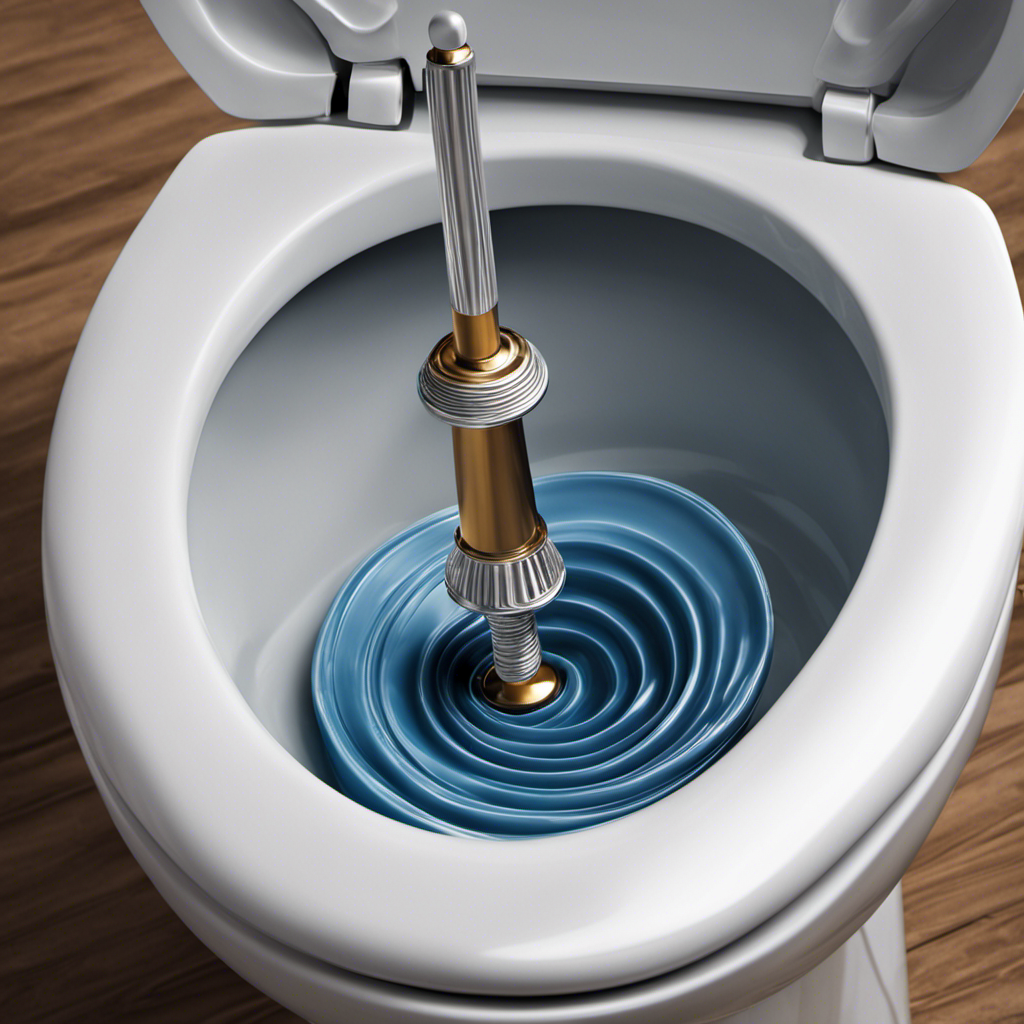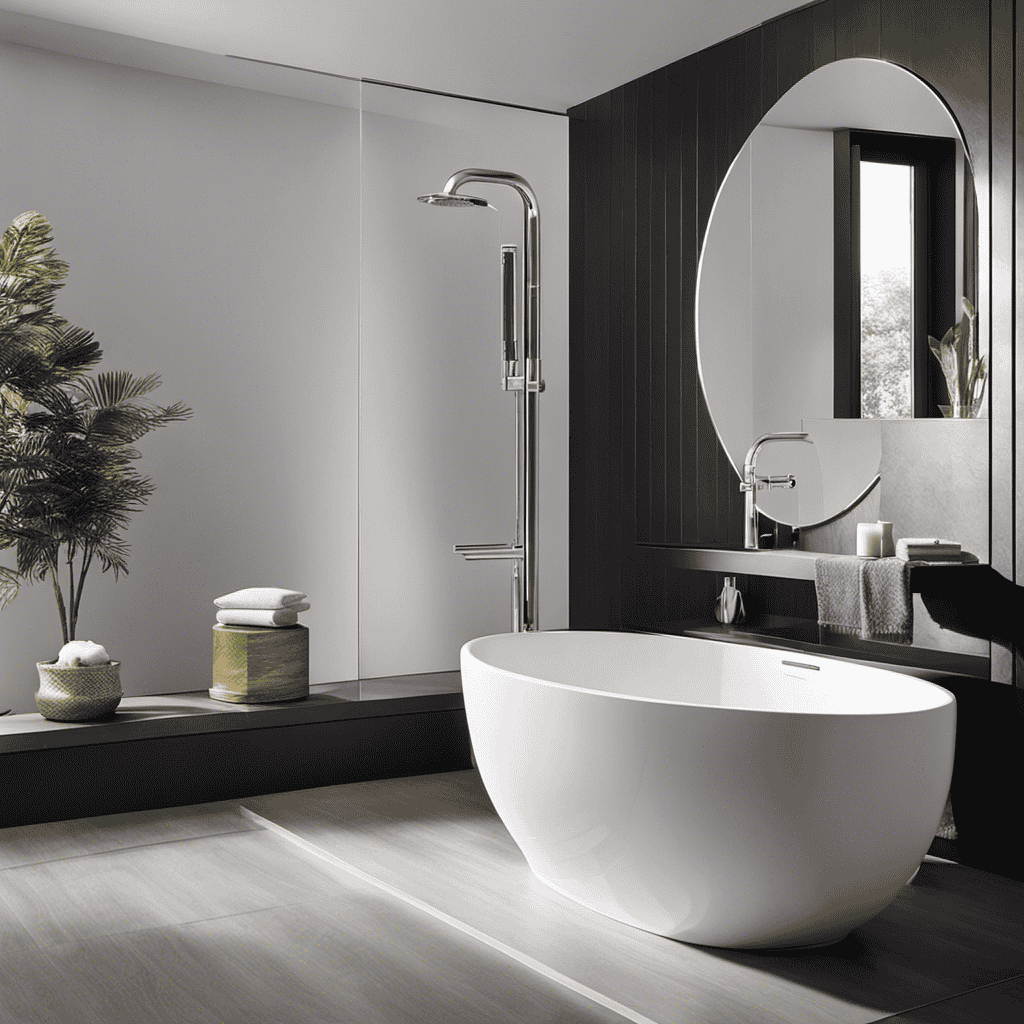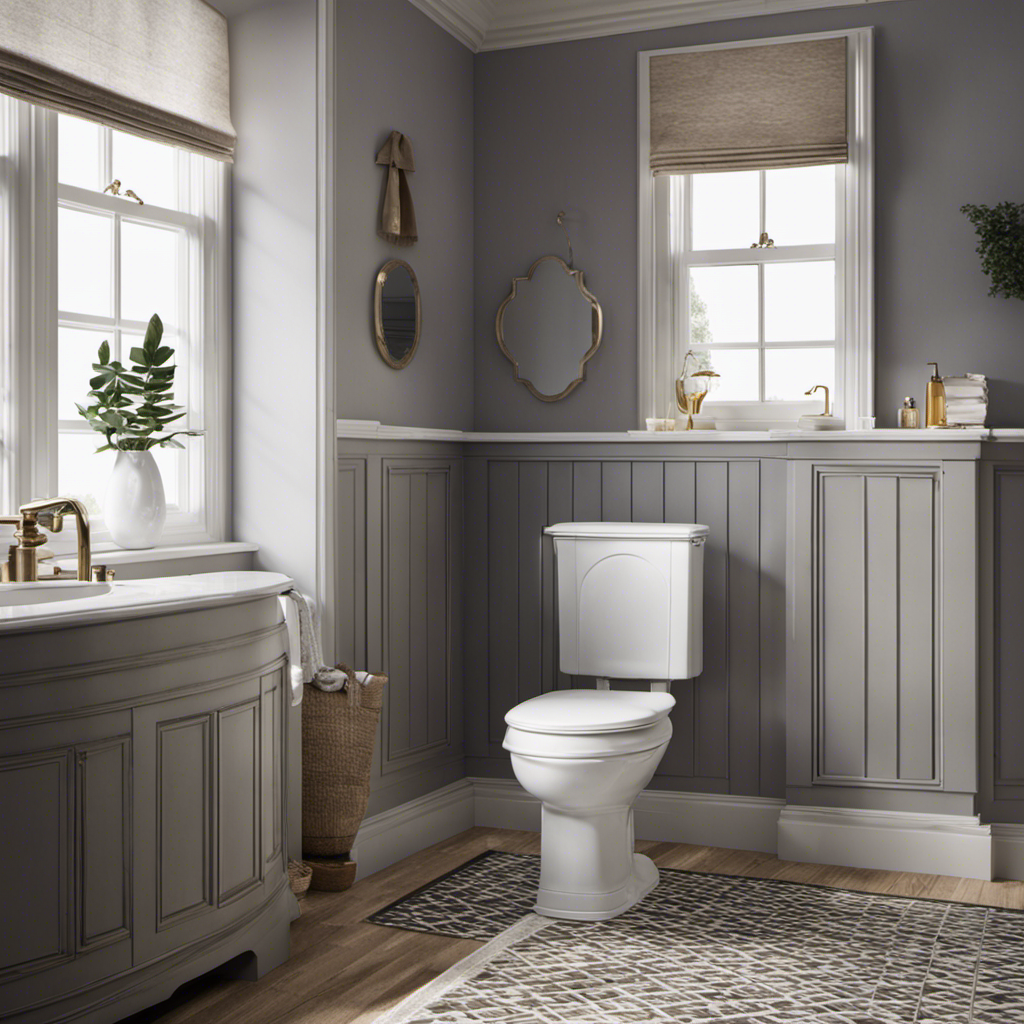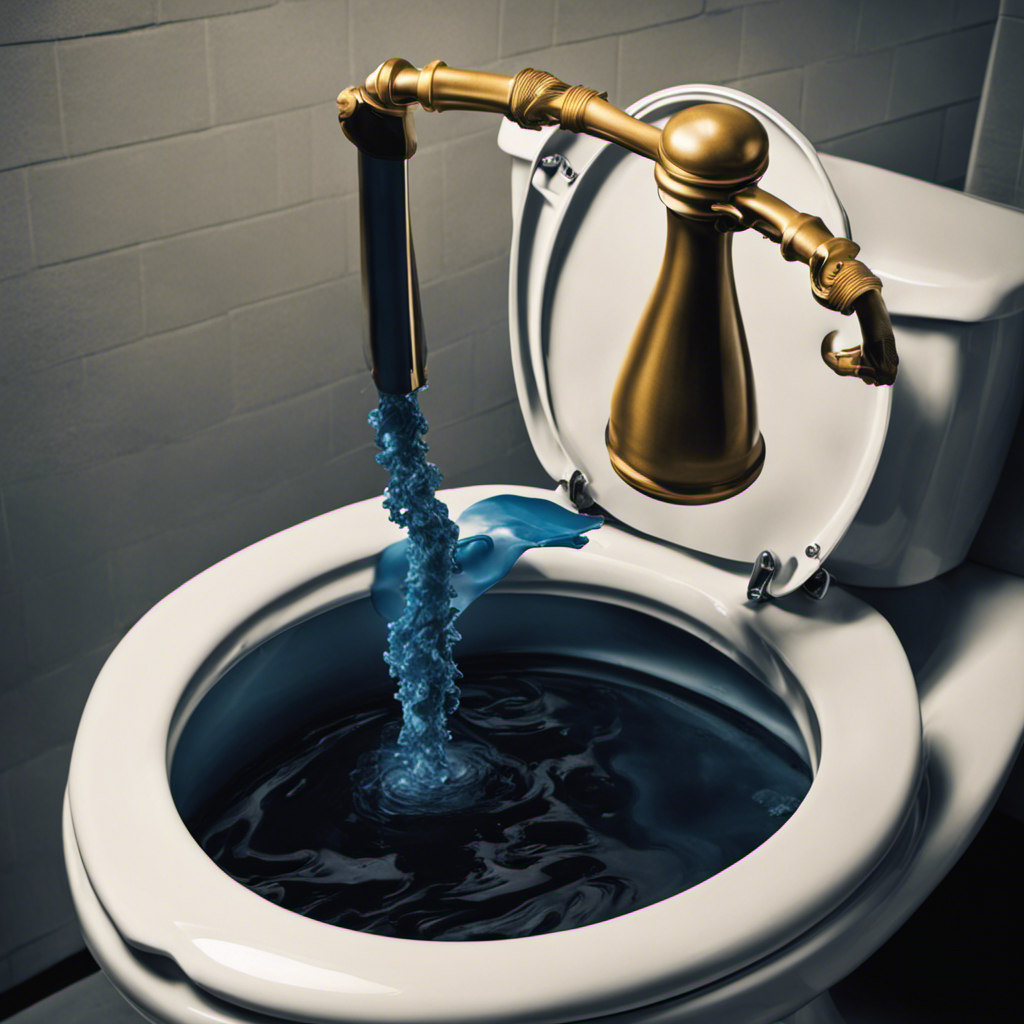Hey there!
Ever had the unpleasant experience of dealing with a stubborn toilet clog? Trust me, I’ve been there too. But fear not, because I’ve got you covered with some expert tips on how to remove that pesky clog.
In this article, I’ll walk you through the common causes of toilet clogs, the tools you’ll need, and a step-by-step guide to plunging the clog away. We’ll even explore natural remedies in case you prefer a more eco-friendly approach.
So, let’s dive in and unclog that toilet together!
Key Takeaways
- Flushing items that shouldn’t be flushed can cause toilet clogs
- Regular maintenance and proper usage can help prevent toilet clogs
- Plungers and hot water are effective tools for removing toilet clogs
- Natural remedies like vinegar, baking soda, and dish soap can also be used to clear toilet clogs
Understanding Common Causes of Toilet Clogs
To understand why your toilet is clogged, you’ll want to know the common causes. Preventing toilet clogs starts with recognizing the signs of a potential toilet clog.
One of the most common causes is flushing items that shouldn’t be flushed, such as baby wipes, cotton balls, or sanitary products. These items can easily become stuck in the pipes, leading to a clog.
Another common cause is a buildup of toilet paper or waste over time, which can eventually block the flow of water.
Additionally, tree roots can intrude into the sewer lines and cause clogs.
It’s important to be mindful of what you flush and to regularly maintain your plumbing system to prevent toilet clogs.
Tools and Supplies Needed for Toilet Clog Removal
You’ll need a plunger and a bucket of hot water to effectively clear the clog in your toilet.
Toilet clogs can be a nuisance, but with the right tools and supplies, you can easily resolve the issue on your own.
Prevention is key when it comes to avoiding toilet clogs. Regular maintenance and proper usage can go a long way in preventing clogs from occurring.
DIY toilet clog solutions are cost-effective and convenient. A plunger is a must-have tool for every household. It creates suction that helps dislodge the clog.
Additionally, a bucket of hot water can be used to soften the clog, making it easier to remove.
Remember to take caution and wear gloves when dealing with toilet clogs to maintain hygiene.
Step-by-Step Guide to Plunging a Toilet Clog
Using a plunger is an effective way to clear a stubborn blockage in your toilet.
As a homeowner, I understand the frustration that comes with a clogged toilet. However, there are steps you can take to prevent toilet clogs in the first place.
Regularly cleaning your toilet and avoiding flushing items that should not be flushed, such as wipes or feminine hygiene products, can help prevent blockages.
But if you find yourself dealing with a clog, don’t worry, there are alternative methods for unclogging toilets.
One option is using a toilet auger, which is a flexible cable that can reach deep into the drain to remove the clog.
Another method is using a chemical drain cleaner, but be cautious as these can be harmful if not used properly.
Using Natural Remedies to Clear a Toilet Clog
If you’re looking for an alternative method, natural remedies can be effective in clearing a stubborn blockage in your toilet. Here are some homemade solutions for unclogging toilets that you can try:
-
Vinegar and Baking Soda:
-
Pour one cup of baking soda into the toilet bowl.
-
Follow it with two cups of vinegar.
-
Let the mixture sit for about 30 minutes.
-
Flush the toilet to see if the clog has cleared.
-
Hot Water and Dish Soap:
-
Boil a pot of water.
-
Add a few squirts of dish soap to the toilet bowl.
-
Slowly pour the hot water into the bowl from waist height.
-
Allow the mixture to sit for a few minutes.
-
Flush the toilet to check if the clog has been removed.
When to Call a Professional for Stubborn Toilet Clogs
Sometimes, it’s best to call a professional when dealing with persistent toilet blockages that homemade remedies can’t handle. While many clogs can be resolved with a plunger or a drain snake, there are certain situations where it’s necessary to hire a plumber.
One sign of a more serious clog is if multiple fixtures in your home are backing up simultaneously. This could indicate a main sewer line blockage, which requires specialized equipment and expertise to fix.
Another warning sign is if you’ve tried multiple DIY methods without success. This suggests that the clog is too stubborn or complex for simple solutions.
Additionally, if you notice any foul odors or unusual gurgling sounds coming from your toilet, it’s a clear indication that something is amiss and it’s time to call in a professional plumber.
Frequently Asked Questions
Can I Use Chemical Drain Cleaners to Remove a Toilet Clog?
Using chemical drain cleaners to remove a toilet clog is an option, but there are alternative methods to consider. It’s important to weigh the pros and cons, as these cleaners can be harsh on pipes and harmful to the environment.
What Are Some Alternative Tools I Can Use to Unclog a Toilet?
There are several useful tools to unclog a toilet without using a plunger. One option is a DIY toilet snake, which can effectively break up and remove blockages in the pipe.
Are There Any Household Items I Can Use as Natural Remedies to Unclog a Toilet?
Household items like baking soda, vinegar, and hot water can be used as natural remedies to unclog a toilet. These DIY techniques are cost-effective and environmentally friendly alternatives to chemical-based products.
How Do I Prevent Toilet Clogs From Happening in the First Place?
To prevent toilet clogs, it is important to follow best practices. Regularly maintain your toilet, avoid flushing non-flushable items, and be mindful of the amount of toilet paper used. These measures can help prevent clogs from occurring.
Can a Toilet Clog Be a Sign of a More Serious Plumbing Problem?
A toilet clog can indicate underlying plumbing issues. It’s important to identify and address these problems promptly to prevent further damage. Professional help may be necessary for complex plumbing issues.
Conclusion
After following these steps and using the right tools, I was able to conquer the stubborn toilet clog. It felt like a victorious battle, with the plunger serving as my trusty weapon.
Armed with knowledge and determination, I was able to restore the flow and bring peace back to my bathroom kingdom.
Remember, even though a clogged toilet can be a daunting challenge, with a little know-how and some elbow grease, you can be the hero of your own plumbing adventure!










